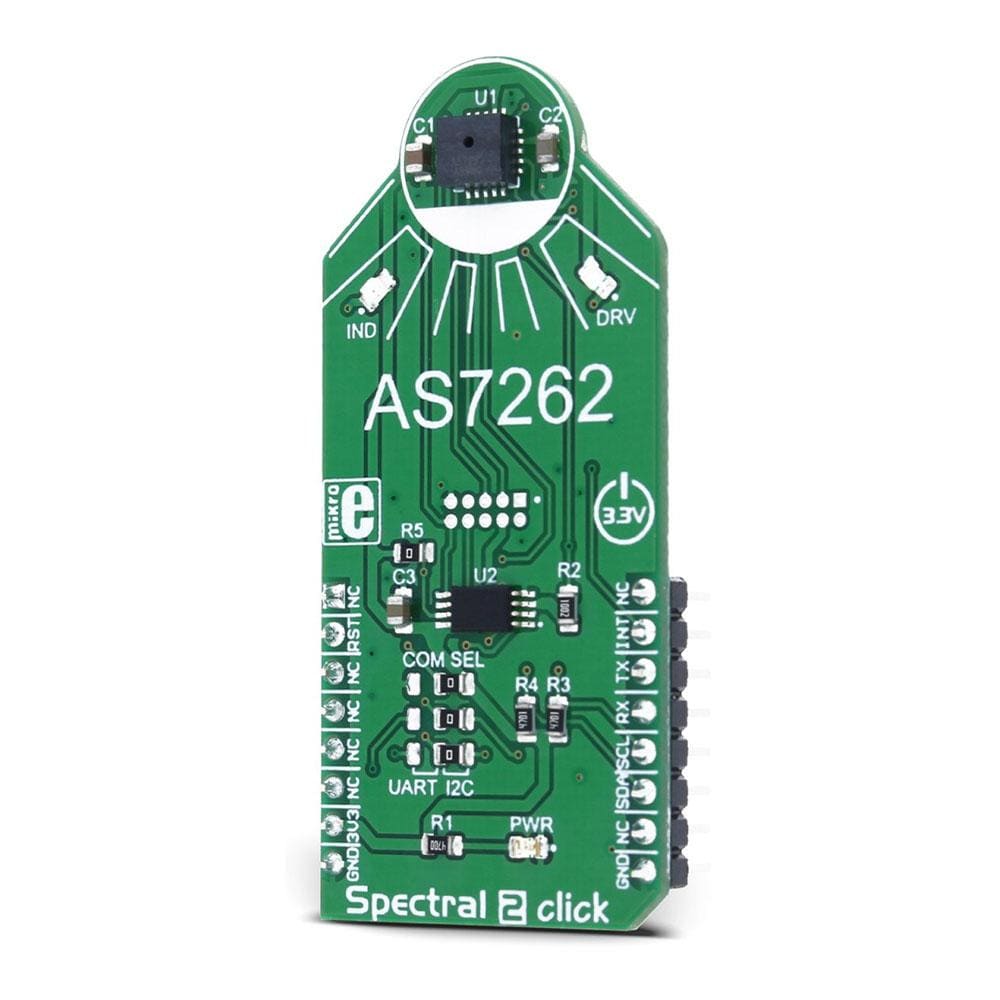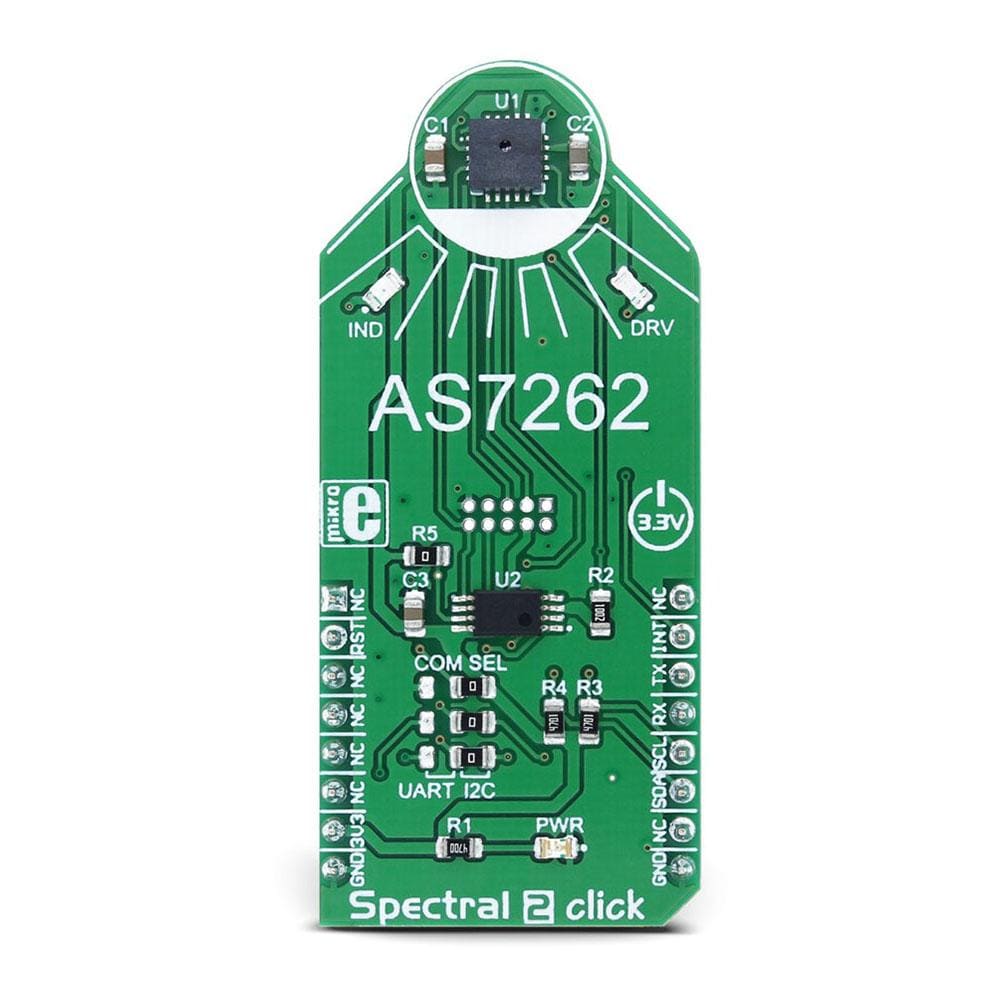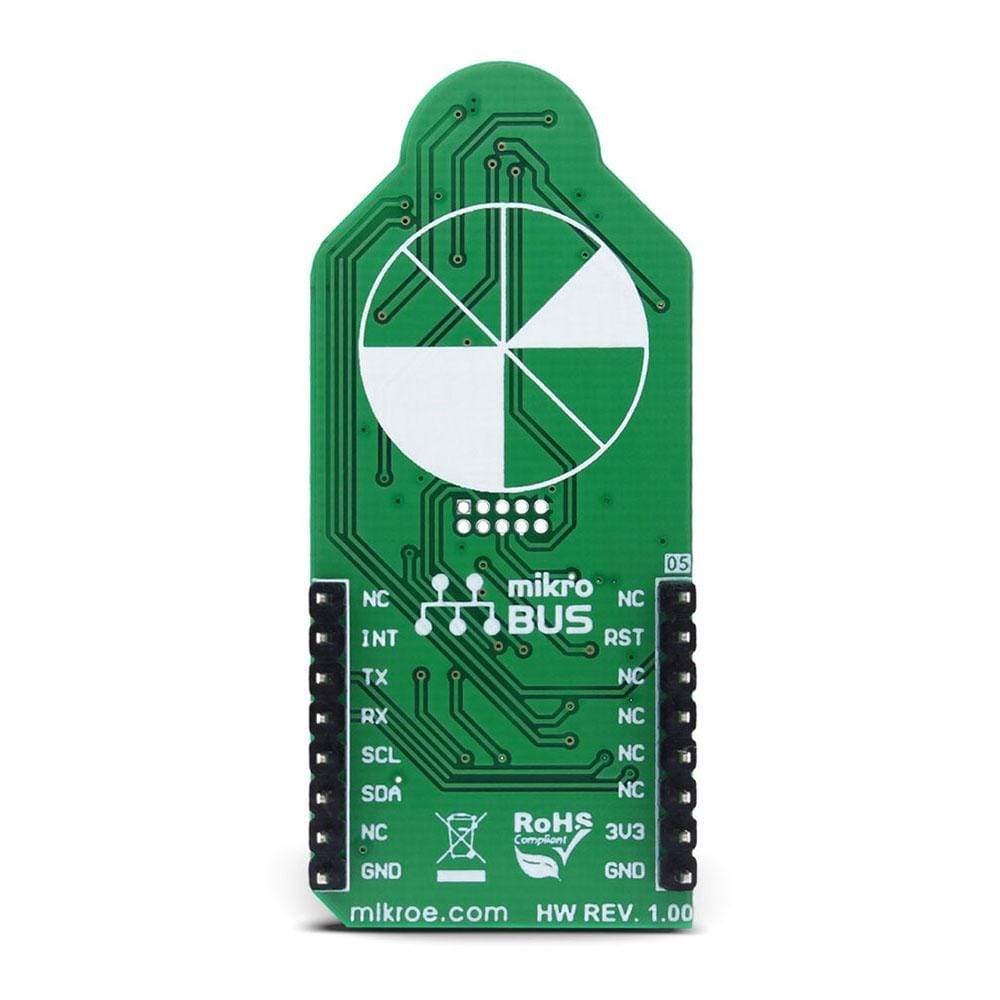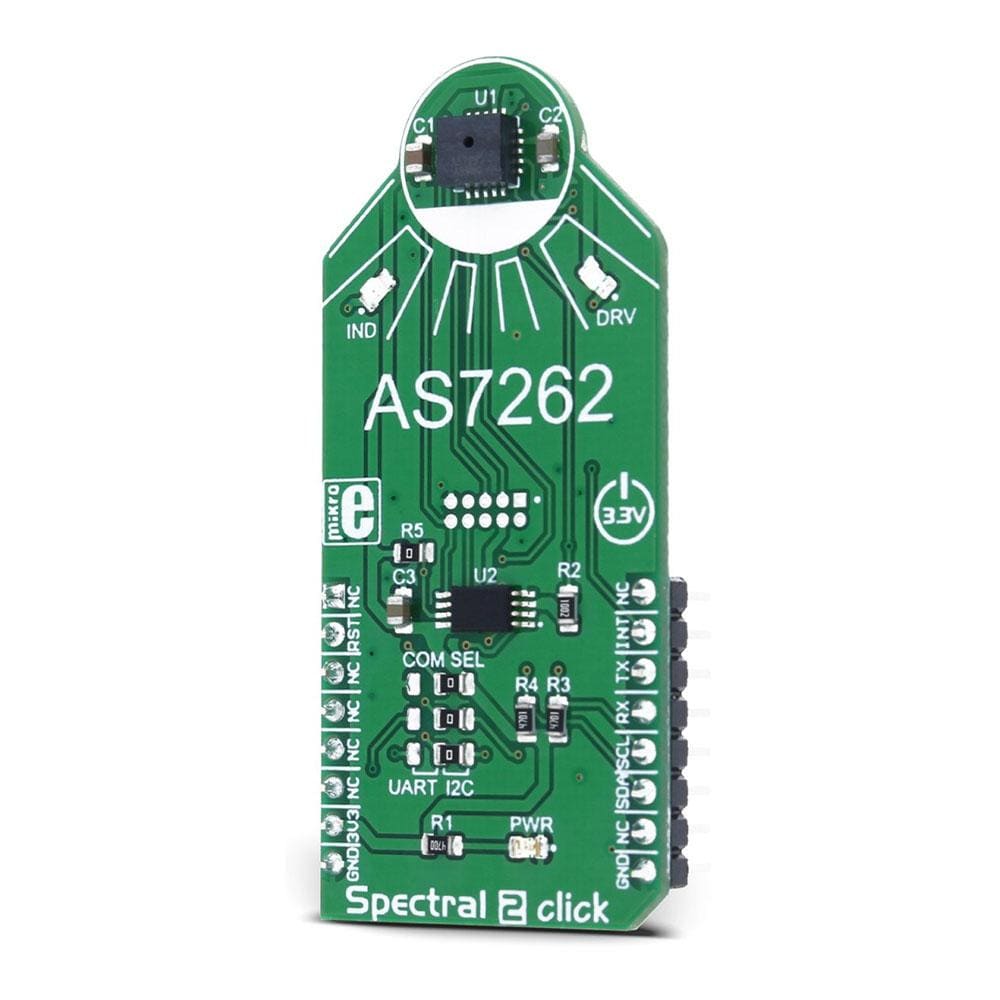
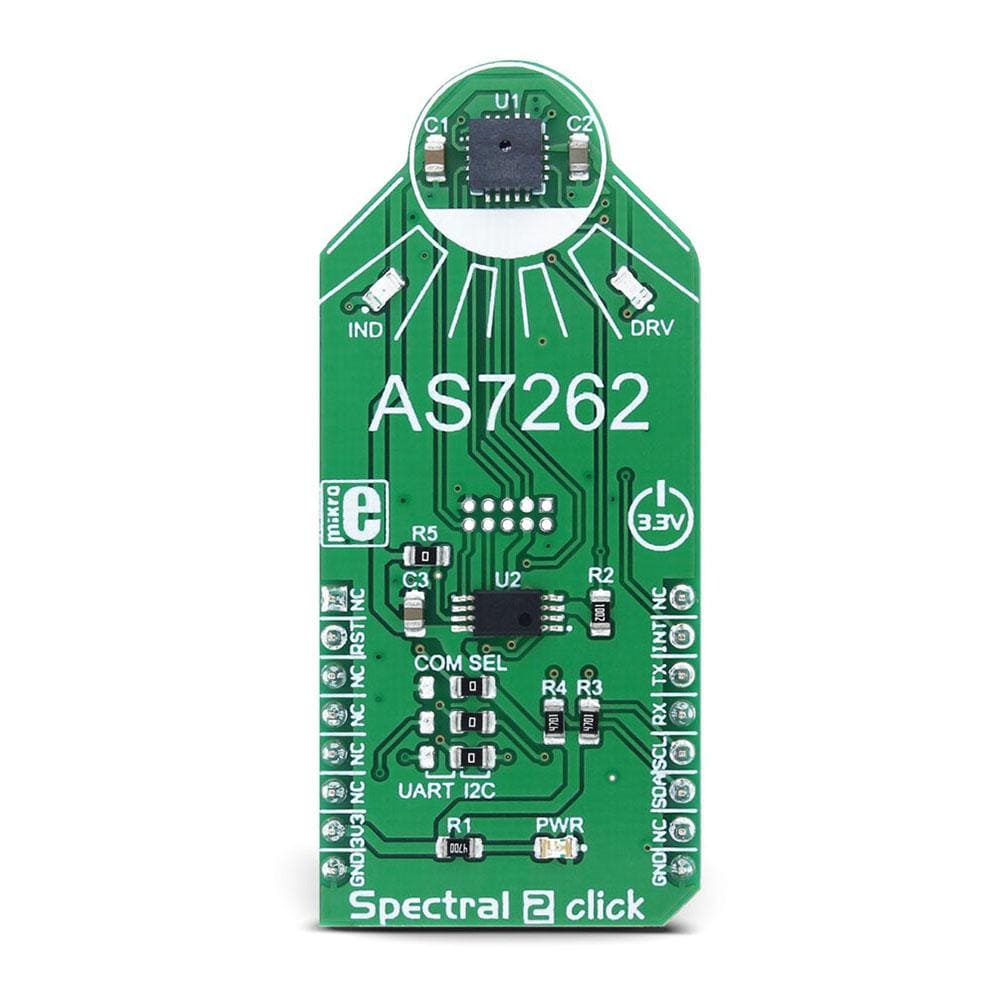
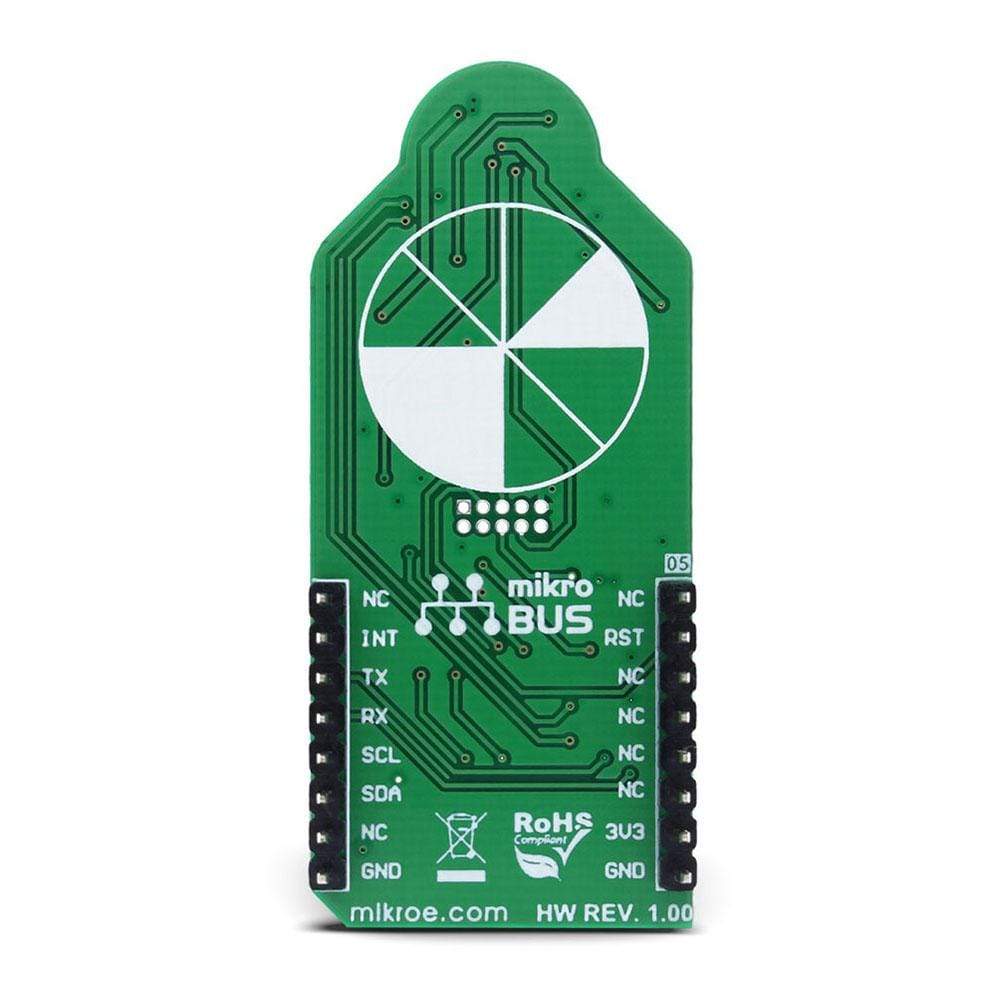
Overview
The Spectral 2 Click Board™ is a multispectral colour sensing device, which uses the state-of-the-art sensor IC for very accurate colour sensing. The sensor on the Spectral 2 Click Board™ provides multi-spectral sensing in the visible range of wavelengths from approximately 430nm to 670nm with the full width at half maximum (FWHM) of 40nm.
The Spectral 2 Click Board™ provides a direct reading of the six different colour components with the 16-bit precision, as well as the calibrated reading, that gives 32-bit float values with an 8-bit biased exponent and a 23bit fraction part, processed through the Spectral ID engine. The sensor also integrates two programmable LED channels with constant current drivers, useful for indication and for providing the backlight for the measured colour object.
.
Downloads
Das Spectral 2 Click Board™ ist ein multispektrales Farbsensorgerät, das den hochmodernen Sensor-IC für eine sehr genaue Farberkennung verwendet. Der Sensor auf dem Spectral 2 Click Board™ bietet multispektrale Erkennung im sichtbaren Wellenlängenbereich von ca. 430 nm bis 670 nm mit einer Halbwertsbreite (FWHM) von 40 nm.
Das Spectral 2 Click Board™ ermöglicht eine direkte Messung der sechs verschiedenen Farbkomponenten mit 16-Bit-Präzision sowie eine kalibrierte Messung, die 32-Bit-Float-Werte mit einem 8-Bit-Exponenten und einem 23-Bit-Bruchteil ergibt, die durch die Spectral ID-Engine verarbeitet werden. Der Sensor integriert außerdem zwei programmierbare LED-Kanäle mit Konstantstromtreibern, die zur Anzeige und zur Bereitstellung der Hintergrundbeleuchtung für das gemessene Farbobjekt nützlich sind.
.
| General Information | |
|---|---|
Part Number (SKU) |
MIKROE-2973
|
Manufacturer |
|
| Physical and Mechanical | |
Weight |
0.019 kg
|
| Other | |
Country of Origin |
|
HS Code Customs Tariff code
|
|
EAN |
8606018712717
|
Warranty |
|
Frequently Asked Questions
Have a Question?
Be the first to ask a question about this.

